I was trying to code for following program
Given a set of non-overlapping intervals, insert a new interval into the intervals (merge if necessary).
You may assume that the intervals were initially sorted according to their start times.
Example 1:
Given intervals [1,3],[6,9] insert and merge [2,5] would result in [1,5],[6,9].
Example 2:
Given [1,2],[3,5],[6,7],[8,10],[12,16], insert and merge [4,9] would result in [1,2],[3,10],[12,16].
This is the relevant part of my program. Here I want to erase the few positions from the vector, but then I am getting the following error:
error: stray '\177' in program
intervals.erase(intervals.begin() + (p+1), intervals.begin() + (q+1));
vector<Interval> Solution::insert(vector<Interval> &intervals, Interval newInterval) {
int n = intervals.size();
int p = -1, q = -1, a, b;
for(int i=0; i<n; ++i) {
if(intervals[i].start <= newInterval.start <= intervals[i+1].end)
p = i;
else if(intervals[i].end < newInterval.start < intervals[i+1].start)
a = i;
if(intervals[i].start <= newInterval.end <= intervals[i+1].end)
q = i;
else if(intervals[i].end < newInterval.end < intervals[i+1].start)
b = i;
}
int x, z;
if(p != -1 && q != -1)
x = q-p;
if(x > 0) {
z = intervals[q].end;
intervals.erase(intervals.begin() + (p+1), intervals.begin() + (q+1));
intervals[p].end = z;
}
return vector
}
